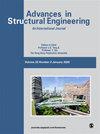预测和优化滚齿参数,最大限度降低能耗和齿轮几何偏差
IF 2
4区 工程技术
引用次数: 0
摘要
在齿轮加工中提高齿轮精度和实现绿色可持续发展是齿轮制造工艺的两个重要方面。然而,要同时实现这两个目标,在选择齿轮加工参数时可能需要做出权衡。在这项工作中,同时考虑了能耗和齿轮几何偏差,以优化滚齿参数。滚齿参数、能耗和齿轮几何偏差之间的关系采用响应面法(RSM)建模。利用方差分析(ANOVA)检验了模型的统计意义。然后采用改进的多目标粒子群优化法(IMOPSO)来解决滚齿过程中涉及多个相互冲突的目标的优化问题。结果表明,能耗(E)和齿轮几何偏差都与参数有关。进给速度(f)和主轴转速(n)对能耗(E)和齿轮几何偏差的影响是相反的。通过计算帕累托前沿得到的最佳滚齿参数集可以为制造商解决滚齿过程中出现的权衡问题提供可行的方案,实验结果证实了 IMOPSO 方法的有效性。本文章由计算机程序翻译,如有差异,请以英文原文为准。
Prediction and optimization of hobbing parameters for minimizing energy consumption and gear geometric deviations
Improving gear precision and achieving green sustainability in gear machining are two important aspects of the gear manufacturing process. However, to achieve these two goals simultaneously, it may be necessary to make trade-offs when selecting the gear processing parameters. In this work, both energy consumption and gear geometric deviations were considered simultaneously to optimize the hobbing parameters. The relationships between the hobbing parameters, energy consumption, and gear geometric deviations were modeled using the response surface method (RSM). The statistical significance of the model was tested using analysis of variance (ANOVA). An improved multi-objective particle swarm optimization (IMOPSO) was then performed to solve optimization problems that involved multiple and conflicting objectives in the hobbing process. The results obtained indicate that both the energy consumption ( E) and the gear geometric deviations are parameter-dependent. The feed rate ( f) and the spindle speed ( n) have opposing effects on both energy consumption E and the gear geometric deviations. The optimum hobbing parameter sets obtained from the calculated Pareto frontier can provide a feasible solution for manufacturers to solve the trade-off problems that occur in the hobbing process, and the experimental results confirmed the effectiveness of the IMOPSO approach.
求助全文
通过发布文献求助,成功后即可免费获取论文全文。
去求助
来源期刊

Advances in Mechanical Engineering
Engineering-Mechanical Engineering
自引率
4.80%
发文量
353
期刊介绍:
Advances in Mechanical Engineering (AIME) is a JCR Ranked, peer-reviewed, open access journal which publishes a wide range of original research and review articles. The journal Editorial Board welcomes manuscripts in both fundamental and applied research areas, and encourages submissions which contribute novel and innovative insights to the field of mechanical engineering
 求助内容:
求助内容: 应助结果提醒方式:
应助结果提醒方式:


